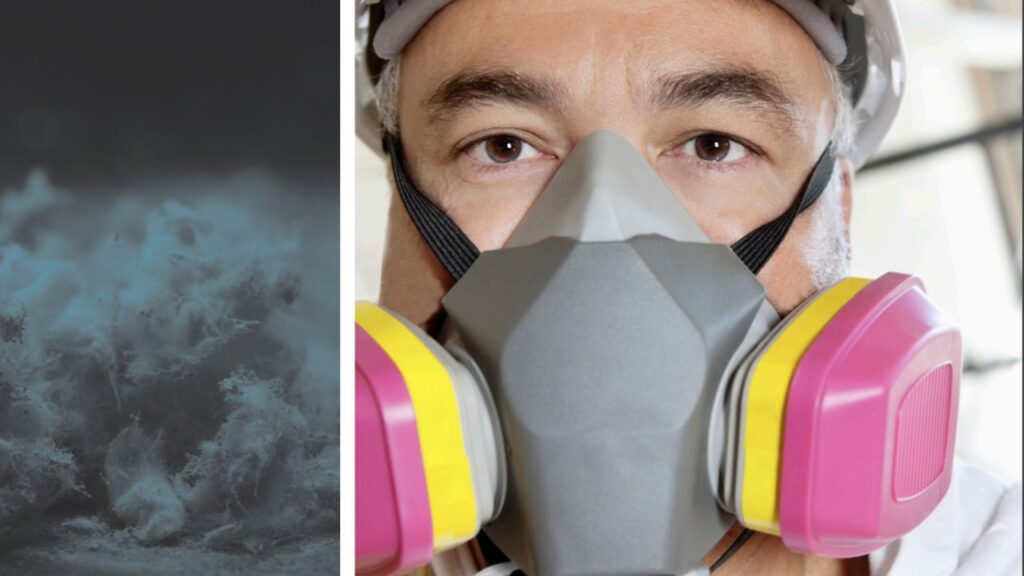How to Clean Your House After Asbestos Exposure: Sometimes our house needs a clean-up after some unexpected challenges. Asbestos exposure to your house is one such thing that need to be tackled head-on. Asbestos exposure is a serious threat to your living place as posing potential health risks. In this blog, we have covered everything you need to know about cleaning your house after Asbestos exposure.
What is Asbestos Exposure?
Asbestos exposure can come as an unexpected hurdle in our homes. Asbestos is a mineral fiber that was once widely used in building materials due to its heat resistance and durability. It can pose serious health risks if it becomes airborne and is inhaled. It’s commonly found in older homes, especially in insulation, ceiling tiles, floor tiles, and roofing materials.
Being aware of where asbestos might be lurking in your home is the first step towards effectively addressing the issue. Whether it’s in the basement like an undiscovered level or hidden behind walls like secret passages, identifying its potential locations will help you to clean your house.
Related: What is Standard Cleaning & Difference Between Regular & Deep Cleaning?
Why you need worry?
According to Nation Institute of Environmental Health Sciences, Asbestos can be present in many places such as hidden walls, basements, building material. Even the low exposure to the Asbestos fibers are a health risk and can cause lung damage, including cancer.
You should not allow children to patriciate in this Asbestos cleaning or any sort of disaster response clean-ups. Inhaling asbestos fibers released from demolition, renovation and handling of asbestos is dangerous.
How to find if your house requires Asbestos cleanup?
The sole method to determine if your home contains asbestos is by submitting a sample for analysis at a laboratory. Inspections aimed at identifying asbestos presence are to be conducted by certified asbestos inspectors. You can refer to the National Association of Certified Home Inspectors (NACHI) at www.nachi.org/asbestos.htm, or get in touch with your local health department. State-specific contact information is available at www2.epa.gov/asbestos/state-asbestos-contacts.
Safety tips before cleaning your house
Your safety is top priority. Before diving into the cleanup, make sure you’re geared up with the right protective equipment. Asbestos fibers are tiny and can be harmful if inhaled, so it’s like putting on armor before heading into a tough battle. Here’s what you need to safeguard yourself:
- Disposable gloves: Shield your hands from direct contact.
- N95 respirator mask: Keep those harmful fibers out of your lungs.
- Safety goggles: Protect your eyes from any debris.
- Disposable coveralls: Prevent fibers from sticking to your clothing.
Tools and supplies you need for cleaning
- Damp cloths and paper towels: Wipe down surfaces and capture any loose fibers.
- Plastic sheeting and duct tape: Seal off the area to avoid spreading contamination.
- HEPA-filtered vacuum: This special vacuum will pick up tiny asbestos particles.
- Sealable bags: Use these for waste disposal to avoid further contamination.
How to start cleaning your house?
Once you have prepared everything from tools and supplies to all safety precautions that are required. It’s time to start cleaning your house from Asbestos exposure.
Sealing the Area
- Use plastic sheeting and duct tape to create a barrier around the affected area.
- Ensure windows and doors leading to the area are closed to prevent cross-contamination.
- Cover vents and air ducts to avoid spreading fibers through the air.
Removing Debris
Once you’re suited up and prepared, it’s time to tackle the mess. Begin by carefully removing any visible debris or materials that might be contaminated with asbestos. Use damp cloths or paper towels to gently clean surfaces and capture any loose fibers. Remember to work slowly and methodically, as rushing could release harmful particles into the air.
- Gently pick up visible debris or materials possibly contaminated with asbestos.
- Use damp cloths to wipe down surfaces and capture loose fibers.
- Carefully fold and seal used cloths in a plastic bag for disposal.
HEPA Vacuum Cleaning
- Start vacuuming from the top of the room and work downward.
- Use a HEPA-filtered vacuum cleaner to trap tiny asbestos particles.
- Vacuum all surfaces, including floors, walls, and furniture.
- Pay extra attention to cracks, crevices, and corners where fibers might collect.
Proper Disposal
Once you have cleaned all places it’s time for the disposal. Seal all used cleaning materials, cloths, and vacuum bags in separate plastic bags and make sure the bags are tightly sealed to prevent fibers from escaping. Label the bags as asbestos waste to alert waste disposal personnel.
- Remove your protective gear carefully, starting from the top and working downward.
- Dispose of the coveralls and gloves in a sealed bag.
- Shower thoroughly to cleanse any potential fibers from your body and hair.
Final Cleanup
- Wipe down your cleaning equipment, such as vacuum attachments, with damp cloths.
- Dispose of these cloths in sealed bags as well.
- Wash your hands and face again after completing the cleanup process.
Remember: Asbestos cleanup can be hazardous, and it’s often recommended to seek professional house cleaners. Regular monitoring and maintenance are essential to ensure your home remains safe and free from asbestos-related risks.
If you’re looking for house cleaning services in Canada then we serve in these locations:

